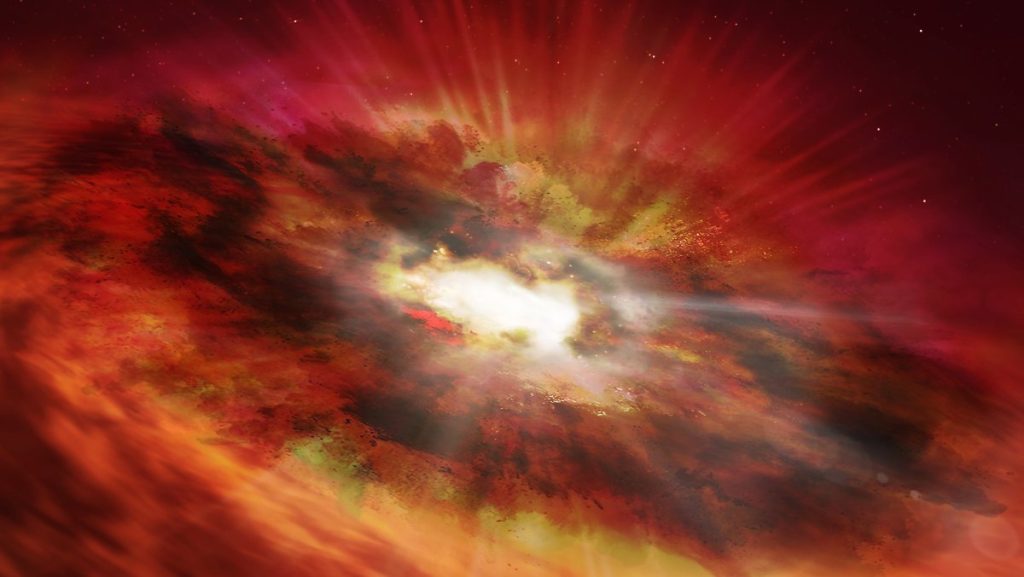Really gigantic like a baby
Ancient black hole can help solve puzzles
Ancient black hole can help solve puzzles
20/4/2022 11:04 AM
Supermassive black holes have been around since the beginning of the universe – but how they got so big so quickly has long been a mystery. Researchers are now finding one of those first giants that could help solve the problem.
It is hidden behind thick dust, and therefore has long been ignored by sky researchers: a supermassive black hole in the center of a galaxy in which new stars are forming explosively. An international team of researchers has now tracked the celestial body while combing through archive data from the Hubble Space Telescope. What’s special: The black hole already existed 750 million years after the Big Bang – so it’s ancient – and thus could provide important insight into the formation and evolution of these giant bodies, According to scientists in the journal “Nature”..
Nearly every galaxy has a large black hole at its center with a mass millions or even billions of times the mass of our Sun. Astronomers were surprised to find such supermassive black holes in galaxies about a billion years after the Big Bang. The research team estimates that the observed black hole has a mass of one to ten million times the mass of the sun, but may have grown to a giant mass of 100 million times the mass of the sun.
But how can objects of such large mass be so fast? Researchers have not yet found a complete answer to this question. Computer simulations and theoretical models indicate that the first supermassive black holes appear in dusty galaxies undergoing supernova formation. As a result, black holes in the middle contain a lot of food and can grow rapidly. Astronomers have already discovered such “stellar” galaxies in the young universe – but so far no major black hole has been detected in any of them. That has now changed with the discovery of GNz7q – as the object in the catalog is called.
Seiji Fujimoto of the University of Copenhagen, who was instrumental in the discovery, explains: “According to our analysis, GNz7q is the first example of a rapidly growing black hole in the dusty center of a ‘starburst’ galaxy.” Theory.” The emission from GNz7q indicates the formation of about 1,000 stars per year in the star system, but it also contains parts that Fujimoto and colleagues believe can only be explained by a large black hole hidden in the galactic core.
Many of these things are suspected
The location of the object is also surprising to astronomers: it is located almost in the middle of the “Northern Hubble GOODS Fields”, one of the best and most intensively studied regions of the entire sky. Since dust absorbs a large part of the radiation, astronomers have not observed GNz7q until now. The combination of all available data at different wavelengths finally showed the researchers that this is an unusual celestial body.
“However, you are unlikely to find something so rare in such a small region of the sky, which has been studied in detail,” stresses co-author Gabriel Brammer of the University of Copenhagen. “So we suspect there’s a lot more to this stuff than we previously thought.”
The team now wants to use its method of analysis to examine other regions of the sky — and then closely monitor the objects it hopes will be found with the new James Webb Space Telescope. In this way, according to the researchers, one can gain insight into the formation and evolution of supermassive black holes in the early universe.

“Total coffee aficionado. Travel buff. Music ninja. Bacon nerd. Beeraholic.”








More Stories
Coral Seeding: Artificial Insemination Makes Coral More Heat Tolerant
Fear, Anger, and Denial: How People Respond to Climate Change – Research
LKH Graz: Using radiation to combat heart arrhythmias